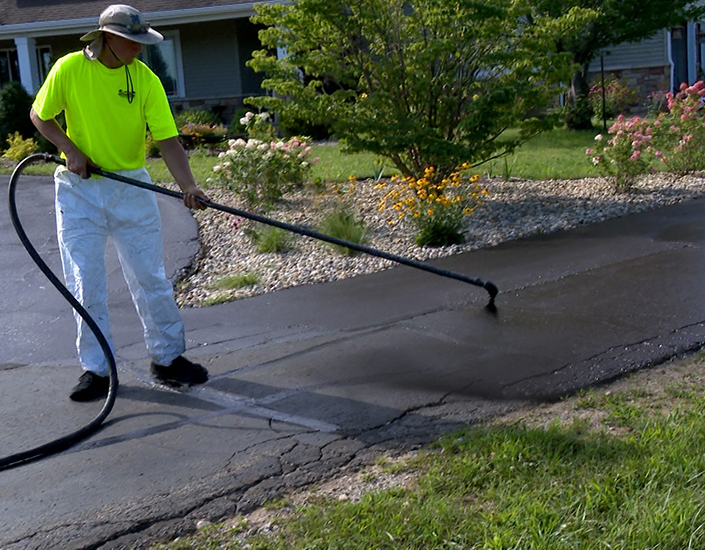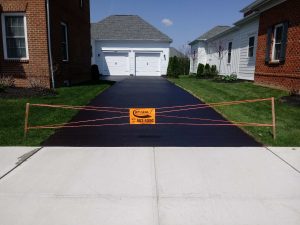Revitalize Your Residential Property with Regrading and Asphalt Sealing Strategies
Warm Mix Asphalt: A Lasting Remedy for Pavement
Warm Mix Asphalt (HMA) has become a leading lasting option for sidewalk remedies, supplying a myriad of innovative technologies and ecological benefits. Its capability to recycle products and lower energy usage provides a compelling case for its fostering in roadway building projects. Furthermore, the lasting performance and sturdiness of HMA make it a preferred alternative for facilities advancement. As the demand for environmentally friendly building and construction techniques grows, checking out the subtleties of HMA's sustainability can offer valuable insights right into the future of sidewalk solutions.
Environmental Advantages of Hot Mix Asphalt

Moreover, Hot Mix Asphalt helps to mitigate metropolitan warmth island effects. Its dark shade takes in sunshine, decreasing the amount of heat showed back into the ambience contrasted to lighter-colored pavements. This can reduce ambient temperature levels in urban areas, lowering the need for cooling and eventually reducing power consumption.
On top of that, Hot Mix Asphalt contributes to improved stormwater management. Its porous nature allows water to charge and penetrate the pavement groundwater supplies, minimizing overflow and the threat of flooding. These environmental benefits make Warm Mix Asphalt a lasting choice for paving roads and highways.
Energy Performance in HMA Production
Is power performance a critical factor in the production of Hot Mix Asphalt (HMA)? Energy plays a substantial role in the production of HMA, impacting both price and ecological sustainability. One vital element of energy efficiency in HMA production is the use of warm mix asphalt (WMA) innovations.
Additionally, innovations in plant innovations have led to even more energy-efficient HMA production procedures. By enhancing power usage in HMA production, the market can reduce its carbon footprint while keeping premium pavement materials.
Recyclability of Hot Mix Asphalt
The recyclability of Warm Mix Asphalt (HMA) is a crucial aspect of its sustainability and long-term environmental influence. HMA is just one of one of the most recycled materials in the USA, with over 100 million lots of recovered asphalt pavement (RAP) being recycled annually in new sidewalk building and construction. Reusing HMA uses several environmental advantages, such as reducing the need for virgin products, decreasing power intake during production, and decreasing the quantity of waste sent out to land fills.
The process of recycling HMA entails grating the existing sidewalk, crushing it into smaller pieces, and blending it with brand-new accumulation and asphalt binder to create a recycled mix. Generally, the recyclability of HMA plays from this source a substantial duty in advertising sustainable practices within the pavement sector.

Long-Term Performance of HMA
Asphalt pavements demonstrate resilience and resilience over an extended period, mirroring the long-lasting efficiency of Warm Mix Asphalt (HMA) Additionally, innovations in HMA innovation, such as the usage of polymer-modified binders and warm mix asphalt, have actually even more improved the durability and durability of HMA pavements. By focusing on quality building and construction and upkeep methods, HMA proceeds to prove itself as a lasting and cost-effective solution for long-lasting sidewalk framework.

HMA: Sturdiness and Sustainability
Showing both sturdiness and sustainability, Warm Mix Asphalt (HMA) has become a foundation in the building of resilient sidewalk facilities - hot mix asphalt. HMA's sturdiness originates from its capacity to stand up to heavy loads, extreme weather problems, and high web traffic quantities, making it a dependable choice for highways, highways, and airport terminal paths. The make-up of HMA, which normally includes accumulations, binder, and filler, plays a critical function in boosting its longevity and resistance to damage
Furthermore, HMA's sustainability hinges on its recyclability and energy-efficient production procedure. The ability to reuse redeemed asphalt pavement (RAP) in new HMA combinations a knockout post minimizes the great post to read need for virgin products and reduces the ecological effect of sidewalk building and upkeep. In addition, the power efficiency of creating HMA depends on its lower blending temperatures compared to various other pavement products, causing reduced energy usage and greenhouse gas exhausts.
Final Thought
Finally, warm mix asphalt (HMA) supplies a sustainable solution for pavement with its eco-friendly qualities. HMA's recyclability, energy efficiency in production, and lasting durability make it an environmentally friendly option for road building and construction. By preserving all-natural sources, decreasing waste, and reducing greenhouse gas emissions, HMA plays an important role in promoting sustainability in facilities advancement. Its capacity to mitigate city warmth island effects even more highlights its importance in producing resilient and ecologically conscious pavement systems.
HMA is one of the most recycled materials in the United States, with over 100 million loads of recovered asphalt pavement (RAP) being reused each year in new pavement construction.The procedure of reusing HMA includes grating the existing pavement, crushing it into smaller pieces, and mixing it with new accumulation and asphalt binder to create a recycled mix.Asphalt pavements demonstrate toughness and resilience over an extended period, reflecting the long-term performance of Warm Mix Asphalt (HMA) Additionally, developments in HMA technology, such as the use of polymer-modified binders and warm mix asphalt, have actually better improved the longevity and durability of HMA sidewalks. The ability to reuse reclaimed asphalt sidewalk (RAP) in new HMA mixtures reduces the need for virgin materials and lessens the environmental impact of pavement building and construction and maintenance.